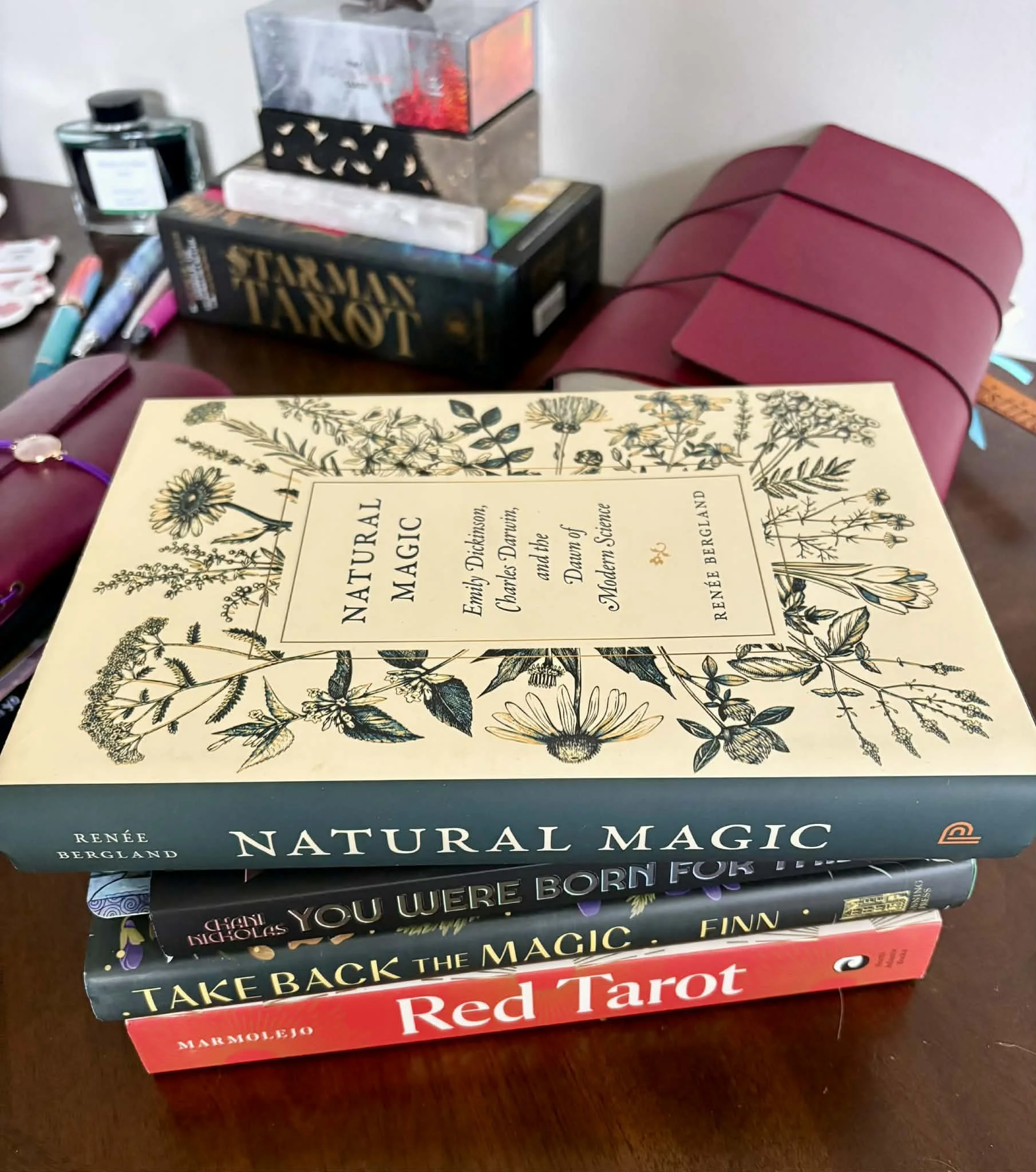I wasn’t really thinking about the whole word of the year thing and then…
Over the weekend I had a delightful conversation with a long time friend/student from long ago, and she said some things that helped ideas in my own head that had been floating around for months to finally coalesce.
Word(s) of the year for 2026
Then my phrase of the year just became obvious. Like, I didn't have to think about it at all. It was just THERE... like something that grew out of the earth:
WONDER AND WHIMSY
So first question: Are you doing a word or phrase? Do you have it yet?
At the same time as I’ve been thinking about things that that conversation helped me to solidify, I’ve also been contemplating the idea of creating personal curriculums. It’s a cool thing going around on TikTok right now.
Personal Curriculum: What and How
We all consume a lot of media — whether online or via books or streaming... We take in a lot, but do we engage with the material?
Obviously some of it is just meant to kinda… pass through us. But there’s a lot that we take in and release that’s deserving of more of our time and attention and thought.
I miss this aspect of college and graduate school: reading literature and then sitting in a room of people who are also interested in literature and we’re dissecting and diving deep and extracting. We’re talking; we’re arguing; we’re writing papers.
And then those works really become a part of us. They inform our identity and how we view the world.
So for this personal curriculum idea, there are a few important components:
Pick questions to ask yourself. I saw one person working on the idea of good and evil, for example. Another was investigating how authoritarianism develops. But it doesn’t have to be that serious. I’m looking into redeveloping some sense of my original wonder and whimsy.
Put together a course and a time limit. I’ll be working from January through mid May. Like a college’s winter/spring semester.
Your course can have books, articles, movies. Whatever you want. You’re the professor here and the student. My course is the stack of books in the photo but I’m still developing it so that might change. (Or I should say, one of my courses.)
Have a notebook or some sort of cataloging/writing/thinking process in order before you start. I’ll be using a journal for the most part.
Bonus: have some people who are also doing this. Check in with each other. Maybe even have chats now and then to share what you’re excited about or stuck on.
And keep in mind, as I hinted at, you don’t have to stick to one curriculum. I’m developing this one, plus another designed to reignite my geek brain around movement and dance, and a third that is purely physical.
Furthermore, this personal curriculum is just one aspect of how I’ll be playing with and exploring the ideas of wonder and whimsy in 2026, and of course, I’ll keep you up to date now and then about what’s happening.
(May 2026 be better than this terrible year.)





